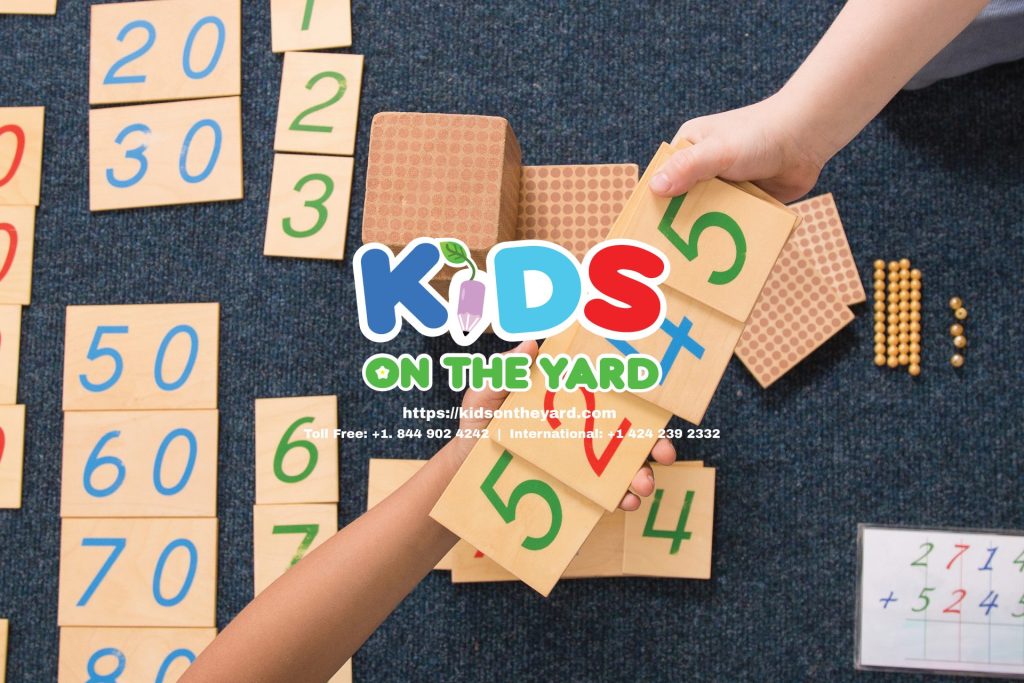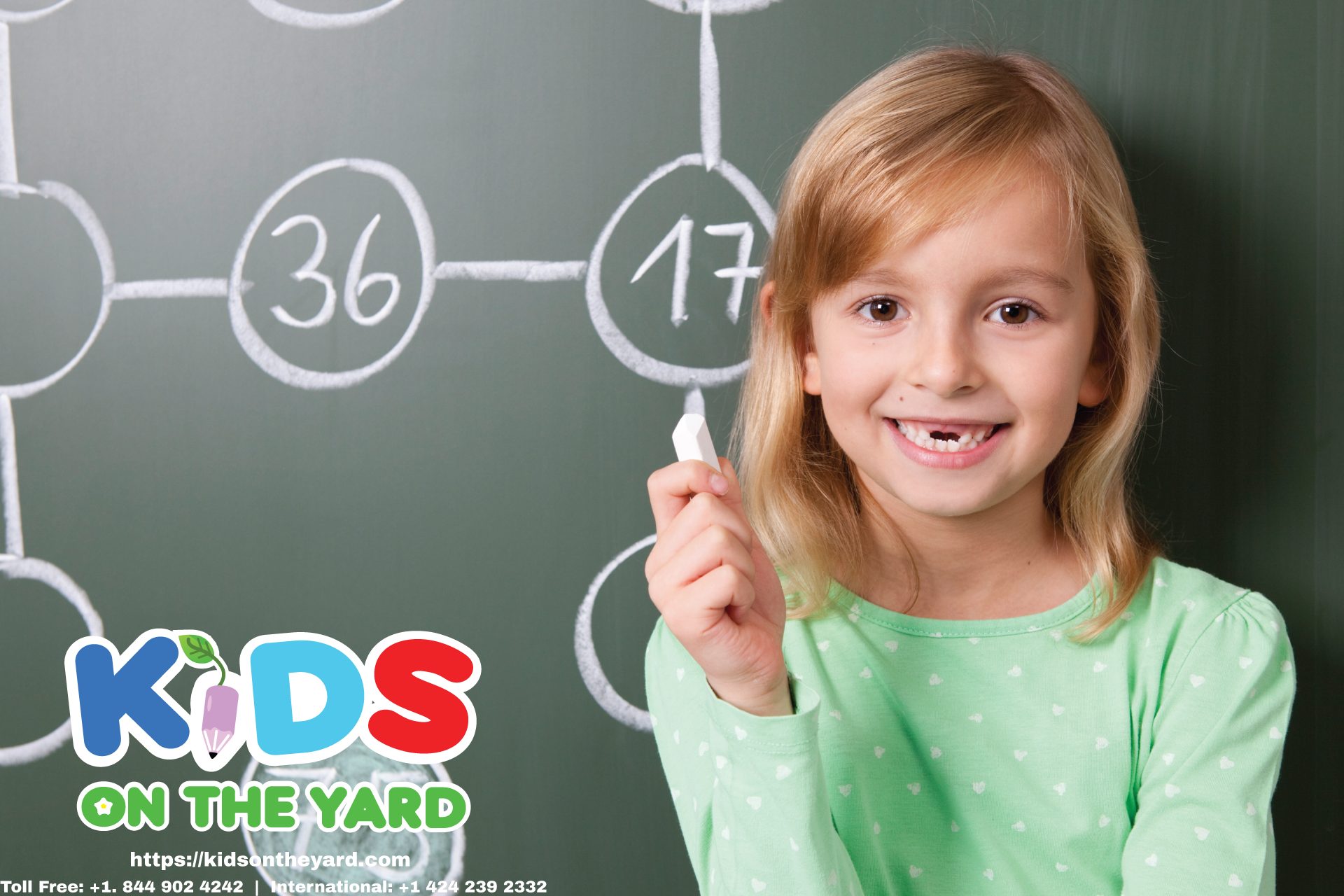|
Audio Article
|
Building early literacy and numeracy skills is a unique journey for every child, with each progressing at their own pace. By using engaging, everyday examples, hands-on activities, and playful approaches, you can help make learning both meaningful and enjoyable. This article offers practical tips and techniques—such as incorporating real-life math problems, conducting interactive number hunts, and singing nursery rhymes to boost phonemic awareness—that support different learning styles and nurture a love for discovery.
Early Numeracy Development
Counting is the foundation of numeracy. In kindergarten, children start by counting objects, recognizing numbers, and understanding quantities which forms the basis for future math learning.
Kindergarten teachers use fun activities like counting songs or number games to make learning enjoyable. At home, parents can encourage children to count everyday objects.
Number recognition is important. Children learn to identify numbers, which helps them work with numbers later.
Basic arithmetic introduces addition and subtraction. Using objects or drawings helps make these concepts tangible.
In first grade, children learn about place value, recognizing that in the number 24, the 2 represents twenty. They also start solving simple word problems.
Second grade introduces larger numbers, place values up to 1,000, and more complex addition and subtraction. Children learn practical skills like telling time and counting money. They’re also introduced to simple graphs.
Manipulative materials like blocks or counters help children visualize math concepts. Teachers often use games and interactive activities to keep learning engaging.
Parents can support math learning at home by integrating it into daily routines, like counting steps or measuring ingredients for a recipe.
By the end of second grade, children should have a solid foundation in numeracy, setting them up for future math learning and problem-solving skills.
Building Early Literacy Skills
Phonological awareness is a key early literacy skill. It involves recognizing and working with the sounds of spoken language. Activities like rhyming games and identifying beginning sounds help develop these skills.
Letter recognition is another important step. Children learn to recognize letters in various contexts, from books to signs.
Early reading comprehension starts with familiarizing children with books and stories. Teachers often read aloud, asking questions to encourage thinking about the story.
In first grade, children start combining letter sounds to read simple words and sentences. They also learn sight words – commonly used words recognized without sounding out.
By second grade, children usually read more confidently. They tackle more complex texts and develop deeper comprehension skills. Writing skills are also developed, with children composing simple sentences and short paragraphs.
Teachers use a mix of phonics instruction, reading practice, and comprehension activities. Parents can support literacy development by reading together daily and discussing stories.
Strong literacy skills are crucial for academic success across all subjects. They enable children to:
- Understand instructions
- Engage with various texts
- Express their ideas clearly
Effective Teaching Strategies for Numeracy
Effective numeracy teaching combines creativity and evidence-based practices. Here are some strategies:
- Integrate math into everyday activities, like counting steps during classroom routines.
- Use hands-on activities like “number hunts” around the classroom.
- Make abstract concepts concrete with materials like blocks and counters.
- Incorporate interactive storybooks that blend literacy and numeracy.
- Organize small group work to encourage peer learning and social interaction.
- Use evidence-based programs like “Math Talk” to develop mathematical language and reasoning skills.
- Utilize educational technology for individualized practice and immediate feedback.
- Provide practical examples from everyday life, like cooking activities, to demonstrate math’s relevance.
These strategies aim to make math tangible, relatable, and enjoyable. By blending traditional methods with interactive experiences and real-world applications, educators can create an effective learning environment that builds a strong foundation in numeracy.

“Mathematics is not about numbers, equations, computations, or algorithms: it is about understanding.” – William Paul Thurston1
Supporting Literacy at Home
Parents play an important role in their child’s literacy development outside the classroom. Here are some practical tips to help support your child’s literacy journey:
- Make reading a daily habit. Set aside consistent reading time, whether it’s a bedtime story or reading together after dinner. Choose a variety of books to keep things interesting.
- Engage in storytelling. Create stories together using everyday objects or family members as characters. Encourage your child to tell their own stories about their day or imaginative adventures.
- Have language-rich conversations. Ask open-ended questions that prompt your child to think and articulate their thoughts. This helps improve their descriptive language and oral storytelling skills.
- Incorporate writing activities. Provide a notebook for your child to scribble, draw, and write in. Encourage them to create lists, write letters, or keep a simple journal.
- Play educational games that promote literacy. Letter recognition games, word puzzles, and matching games can reinforce learning in a fun way.
- Visit the library regularly. Allow your child to choose books that interest them. Many libraries offer story hours and reading clubs to promote a love of books.
- Read aloud together. Choose books slightly above their reading level to introduce new vocabulary. Discuss the story as you go along to deepen comprehension.
- Play word games like rhyming games to improve phonological awareness. Practice sight words using flashcards or apps.
- Incorporate literacy into playtime. Let your child play “school” or use alphabet toys during play.
- Sing songs and nursery rhymes together to develop phonemic awareness.
- Create a literacy-rich environment at home with books and writing materials easily accessible.
- Show your enthusiasm for reading and writing. Celebrate your child’s milestones to build their confidence and motivation.
Addressing Learning Gaps in Early Education
It’s important to recognize that children progress through literacy and numeracy at different paces. Identifying and addressing learning gaps early on is crucial for building a solid foundation. Here are some common gaps and strategies to address them:
| Learning Gap | Strategies |
|---|---|
| Phonological awareness | Use multisensory activities like sand trays for writing letters while saying sounds. Play rhyming games and sound matching activities. |
| Letter recognition | Use flashcards, alphabet books, and letter-based crafts. Create “letter hunt” games in the environment. |
| Reading comprehension | Ask open-ended questions about the text. Use visual aids like story maps to break down parts of the story. |
| Place value | Use hands-on activities with manipulatives like base-ten blocks. Utilize number lines to illustrate how numbers increase and decrease. |
| Basic arithmetic | Use concrete objects for counting and arithmetic. Integrate math games with timed challenges or friendly competitions. |
| Word problems | Walk through problems step-by-step. Use visual aids or act out problems to connect math to real-life situations. |
| Measurement and time | Incorporate everyday activities like cooking to practice measuring. Use both analog and digital clocks in various settings. |
Early identification and consistent practice are key to addressing these gaps. Teachers should use assessments and observations to pinpoint where each child needs extra help. Communication between educators and parents ensures consistent support at school and home.
Parents can provide a supportive learning environment that encourages exploration and creativity. Offer diverse activities catering to different learning styles. Provide regular, positive reinforcement and celebrate small successes to build confidence and motivation.
“With timely intervention, creative teaching strategies, and active involvement from educators and parents, learning gaps can be effectively bridged. This sets children up for continued academic success and a lifelong love of learning.”
By actively participating in your child’s early education, you’re supporting their development of important skills. With consistent effort, you can help foster a love for learning in your child.
How can I help my child start learning to count?
Start with everyday activities—count toys, steps, or snacks. Use counting songs and fun games to keep them engaged and make counting enjoyable.
Why is number recognition important?
Recognizing numbers helps children work with them later. They start associating numbers with quantities, which is foundational for future math skills.
What should my child know by the end of second grade in math?
By the end of second grade, children should understand place values up to 1,000, basic addition and subtraction, simple word problems, telling time, and counting money.
How do hands-on materials help with math learning?
Using blocks or counters makes math concepts tangible, allowing children to see and manipulate quantities. This helps them understand abstract ideas like addition, subtraction, and place value.
How can I integrate math learning at home?
Use daily routines like cooking to teach measurement, count steps when walking, and let children practice counting money or telling time with real-world examples.
What is phonological awareness, and why is it important?
Phonological awareness is recognizing and working with the sounds in language, such as rhyming and beginning sounds. It’s essential for early reading skills and helps children sound out words.
How can I support letter recognition?
Point out letters in books, on signs, and in the environment. Alphabet games, puzzles, and crafts help make letter recognition interactive and fun.
When do children start reading independently?
Children typically start reading simple sentences in first grade and grow more confident with reading by second grade, moving on to more complex texts.
How can I encourage my child’s reading comprehension?
Ask open-ended questions about stories, discuss characters, and relate the story to real-life situations. This helps deepen their understanding and interest.
What are sight words, and why are they important?
Sight words are commonly used words that children should recognize without sounding them out, helping them read smoothly and confidently.


